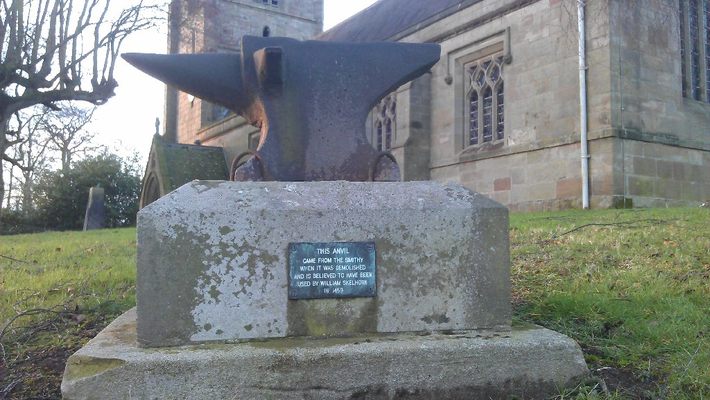About
In the English village of Mucklestone, amongst the typical tombstones and trees outside the parish church sits an anvil with a story of crowns, conflicts, and craftsmanship.
In the 15th century, Mucklestone was entangled in the War of the Roses when the Lancastrian Queen watched the doomed Battle of Blore Heath from St. Mary’s church. (A stained glass window inside the church commemorates this battle.) From atop the church tower, Margaret of Anjou, wife of King Henry VI, watched over the battle taking place just a few miles away, as her forces fell in defeat to the Yorkists.
As a result of Henry VI’s poor mental health, Margaret effectively ruled the kingdom in her husband's place for decades. Evading capture by the approaching combatants was imperative for not only herself but also the Lancastrian faction. The quick-thinking and tactically-minded Margaret sought out William Skelhorn, a Mucklestone blacksmith. She ordered that the blacksmith reverse her horse’s shoes, believing this scheme would mislead any who gave her chase. Margaret then fled on horseback, leaving deceptive prints indicating quite the opposite.
Within view of the queen's tower outlook in St Mary’s churchyard, the very anvil believed to have used in Skelhorn’s smithy memorializes this wily flight and the cunning craftsmanship involved. Not all involved got away, however, for William Skelhorn was executed. Some say this was on the queen's own orders, wishing to stifle knowledge of her illusive escape, while others believe it was Yorkist revenge for Skelhorn’s skillful succor. Either way, in a cruel twist of irony, the blacksmith's anvil is rumored to have served as a chopping block in the execution.
Related Tags
Community Contributors
Added By
Published
October 21, 2022































